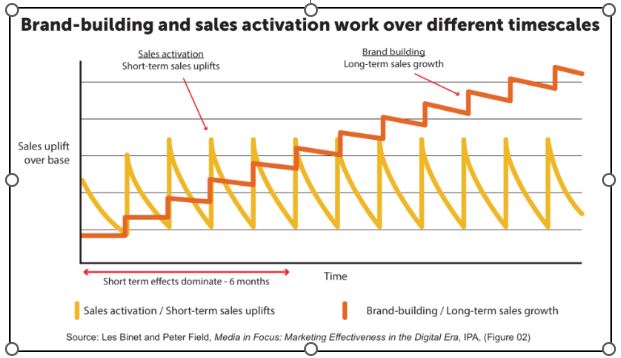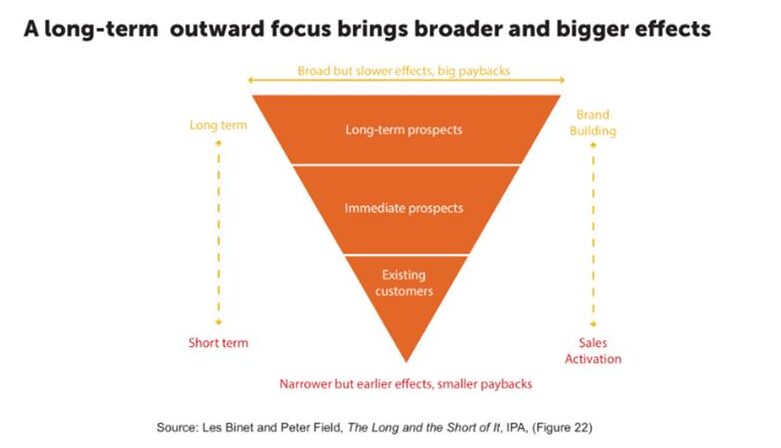The media landscape changes at an ever-increasing pace. Blink and you miss the advent of new channels, formats, and the next hype across the industry. At Golley Slater, we love innovation, it provides us with a wealth of opportunities for our clients and sparks our creativity, meaning better work and results for our clients.
In line with this pace of change, measurement and attribution models are being developed at a rapid pace to keep up with advertisers’ needs. We have in-platform metrics, third-party measurement, automated reports, and analysis for every digital channel in the media landscape. The level of data available to us has changed the game when it comes to analysing and optimising activity to achieve best results for our clients. On the surface, this is great! But zooming out, what do all these metrics mean in relation to a brand’s overall health?
This blog post will recap eminent marketing theory, reminding us of the core ideas and explores why perhaps, as an industry, we’re still on the journey of being able to measure the true effectiveness of digital channels.
It is somewhat surprising that despite the rapid development of our industry, much advertising theory has eluded the tidal wave of change and has remained consistent in its thinking. Yes, media owners will drumroll sparkly new research, industry gurus will deliver talks at Cannes and global conferences with updated findings and insights. But, at the core of these updates are similar central thoughts shining through, with certain channels and planning techniques continuing to lead the way on effectiveness and ROI.
Reminder of the theory.
Brand building is still the most important driver of growth, and it still requires broad reach advertising. Building a brand is a long-term job. It creates mental structures that will encourage potential customers to choose one brand over another. It’s about nudging potential customers over time with a broad net to reach everyone, rather than just those in market. But because most of the audience are not in the market at the time they are exposed, it cannot assume close attention or even interest. This is why emotion is so important in brand advertising, people probably won’t remember the ad, but they may remember how it made them feel- reinforcing their long-term memory structures of a company or brand. Predictably, brand advertising lives well on AV channels like Cinema, TV and VOD.
Sales activation focuses on people who might buy or convert now. This requires tight targeting to an in-market group and messaging is more rational, with useful information on the potential purchase. Activation advertising relies on a response mechanism to ensure customers can go straight to a purchase or data capture. This is a short-term job at a low frequency. Activation advertising sits well on Social, PPC, or Direct Mail.
Sales activation and brand work together to support a full funnel effect, as explained by Les Binet and Peter Field in their well-known ‘The Long and the Short of it’ work.








